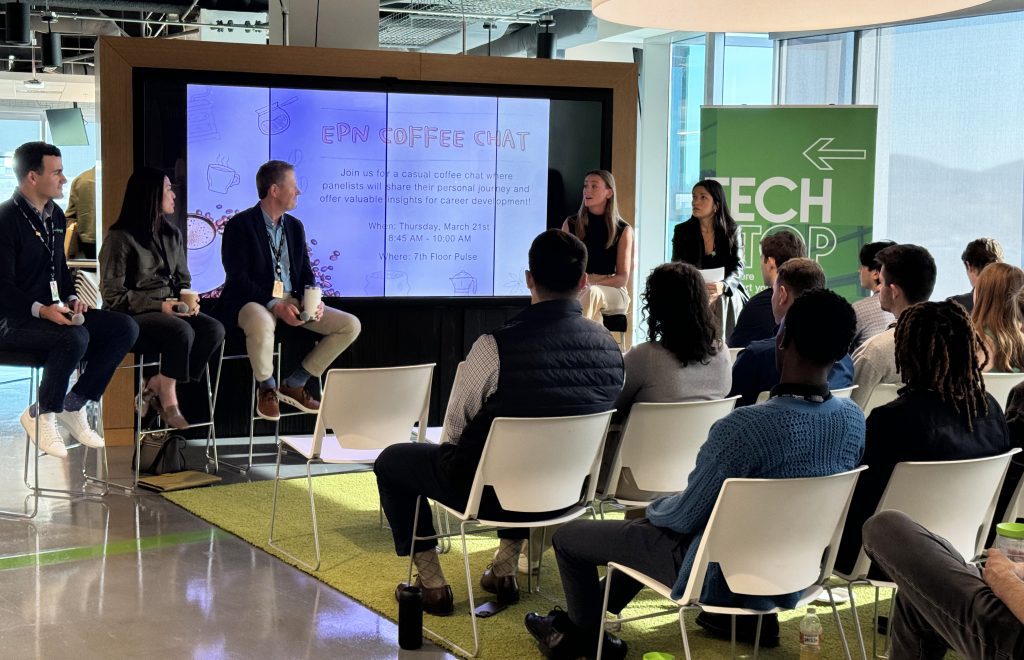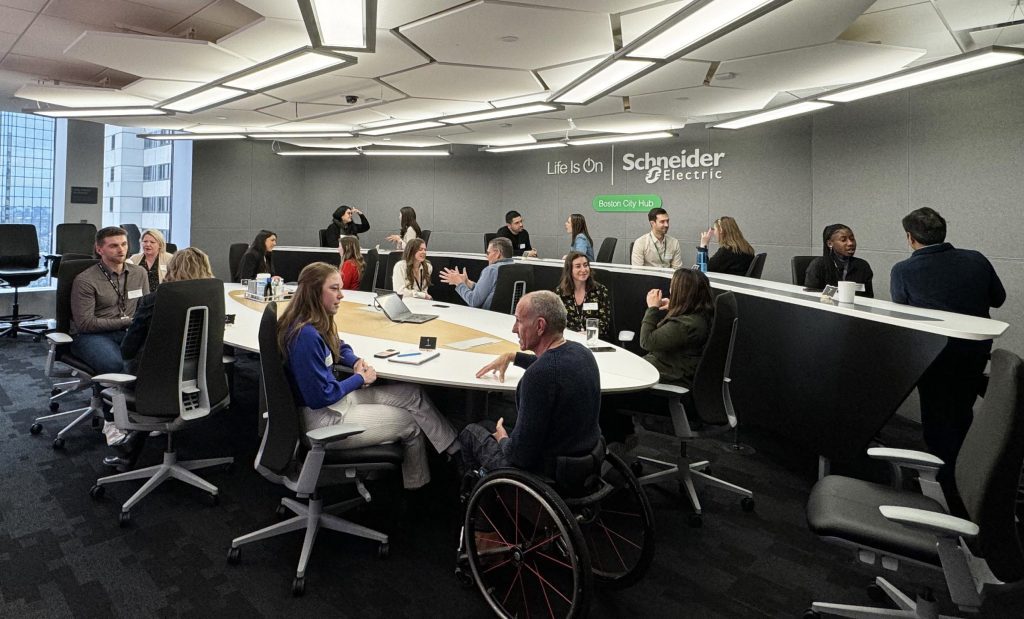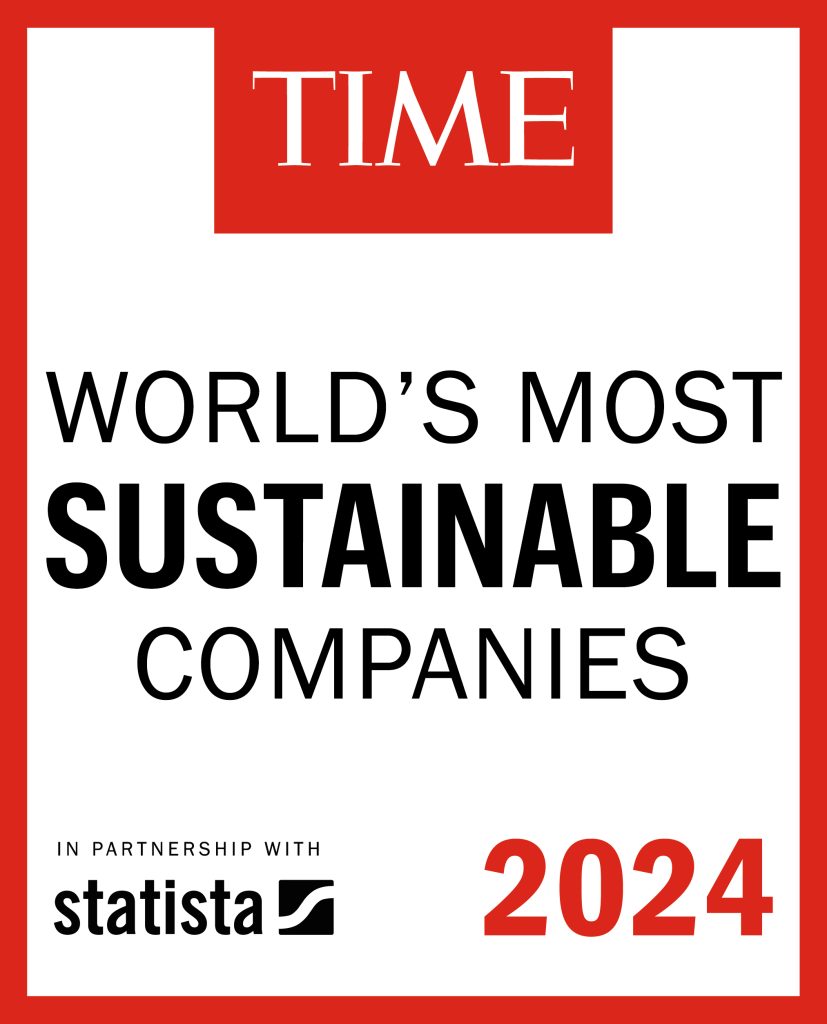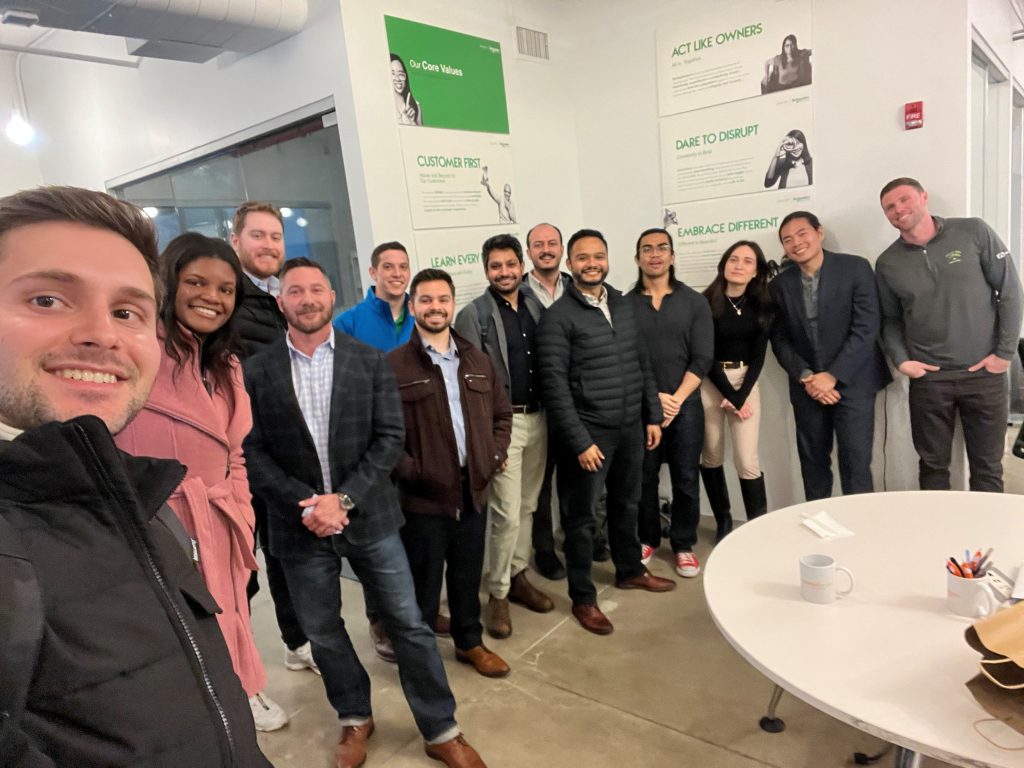In today’s dynamic workplace, nurturing the growth and development of early-career professionals is critical for fostering a talented and resilient workforce and injecting fresh energy and innovative ideas into the organization.
Employees need a place where they can learn, connect, and grow, all while feeling empowered to carve out their professional path. Schneider Electric’s Emerging Professionals Network (EPN) was created for that purpose, to empower early-career employees to grow their networks, expand their horizons, and stretch themselves. But the group is not just for early-career employees, all employees are welcome and can participate.
As the national president overseeing EPN operations across North America, I’ve had the privilege of witnessing firsthand how the network transcends age and experience, welcoming professionals at any stage of their career journey. From participating in events to leading teams, EPN has not only honed my skills but also opened doors to many opportunities.
The purpose and mission of employee resource networks (ERNs)
ERNs are community groups where employees can engage in deeper, more meaningful connections and live Schneider Electric’s diversity, equity, and inclusion commitments. They enhance our employee’s experience and offer opportunities to volunteer for responsibilities beyond one’s job description. These employee-led groups provide support, networking, and professional development opportunities for members with shared interests, backgrounds, or affiliations. ERNs can focus on a wide range of topics such as gender diversity, LGBTQ+ inclusion, sustainability, cultural diversity, and more. Allies are welcome, and any employee can participate.
The Emerging Professionals Network (EPN) is one of our ERNs, with the mission to foster communities of ambitious emerging employees, enrich professional and personal growth, enable inclusive networking, and live SE’s IMPACT values. The group’s core principles are simple: connect, inspire & grow.
Connect: Building strong professional networks
The EPN helps early-career employees to forge meaningful connections, embrace continuous learning, and confidently navigate their career trajectories. Meeting new people is a fast way to learn about other parts of the organization and opportunities within them. I believe that networking is among the most important things anyone can do to accelerate career growth, but it can feel awkward at first. Many emerging professionals want to expand their networks but are unsure where to start. The EPN provides opportunities to build networking skills in low-pressure events, surrounded by peers at similar stages in their career journeys.



Popular EPN networking events include the lunch and learn and the coffee chat. These events are held in person and typically include open networking over a meal, followed by a presentation, and question & answer session. Presenters have included executive leaders, domain experts, and even community members – just to name a few. EPN has introduced its members to new and growing parts of the business, strategy and commercial initiatives, new SE offers and solutions and more. We provide spaces for early career professionals to gain exposure to business units they might not know much about, and to engage with leadership that they might not interact with otherwise.
It can be challenging to learn what is out there beyond the scope of one’s role and team in a large, matrixed organization. Yet many career advancements involve diagonal moves along career lattices, rather than vertical moves up the proverbial career ladder. These are moves where people take on higher-level roles outside of their direct team. Through events designed to introduce new business units, functions, and leaders to its members, the EPN enables network growth and facilitates connections between early-career professionals and opportunities.
Inspire: Empowering employees to take control of their careers
The EPN is committed to the professional and personal development of its members, believing strongly in the power of mentorship, peer learning, and collaborative innovation to drive career advancement. It strives to equip its members with the necessary tools to become agile, forward-thinking leaders who are well-prepared to meet the challenges of today’s ever-evolving business landscape.
EPN events are opportunities to be inspired by the stories of colleagues, peers and leaders. Presenters often share their career journeys which exposes the audience to possibilities perhaps not considered. Events feature topics beyond day-to-day business such as sustainability, goal setting, finding passion at work and more. They are safe spaces where emerging professionals can share moments of vulnerability, compassion, and genuine connection. Community engagement is another important element of emerging professional impact in the EPN, with many events including a philanthropic of volunteer element.
Being part of the EPN offers emerging professionals direct access to the inspiring and enthusiastic culture at Schneider Electric. To quote one of our senior leaders: “culture is a hard topic because it’s … a bit intangible but you know it when you see it and when you feel it.” EPN members are invited to see, feel, and contribute to the unique culture at Schneider Electric from the earliest onset of their careers. They are empowered to be inspired, and inspire others, every day.
Recognized as a great place to work
We say that great people make Schneider Electric a great company, and I can attest that there are many great people who have inspired me along my career journey here. I’m proud that Schneider Electric is consistently recognized for its sustainability impact, leadership, community involvement, and as an overall great place to work. To highlight a few awards for 2024:

- Schneider Electric named the “World’s Most Sustainable Company” by Time magazine and Statistica
- We received the Handshake Early Talent Award, honoring top employers for individuals starting their careers for the fourth year in a row
- Great Place to Work® certified
- Ranked on the Best Places to Work by BuiltIn
These external recognitions echoes the culture the company has created, and the amazing people that work here.
Grow: Stretching beyond comfort zones to foster growth
Ambitious emerging professionals are often hungry for professional and personal growth. They look for opportunities to try new things, take on leadership responsibilities, and push themselves to accelerate career advancement. Since the EPN fosters communities across North America, it provides emerging professionals with plenty of opportunities to lead at the local and regional level. Each chapter has positions for president, vice president and other leadership roles based on chapter needs.
Chapter leaders are empowered to set their own vision, plan, and execute events, manage their budget, engage stakeholders, and collaborate with other local teams. Through chapter leadership, volunteers develop communication, teamwork, and decision-making skills. It also fosters senses of responsibility and adaptability, which are essential elements of personal and professional growth. Leading an EPN chapter can also serve as a platform for honing organizational and time management abilities, which are transferable to a wide variety of positions throughout the company.
All ERNs at Schneider Electric also offer the opportunity to lead at the regional level, collaborating with other ERN leaders and serving as a member of the diversity, equity, and inclusion (DE&I) council. Regional leaders can impact operations within the EPN chapters, and help the company set its standards and direction for DE&I commitments.
Whether involved in leadership at the chapter or regional level, or simply a member, the EPN offers a variety of opportunities. At all levels there are growth opportunities through participation in events, networking and leadership exposure. For those who want to take their EPN experience to the next level, getting involved in leadership will only further enhance their professional and personal development.
Career empowerment
At Schneider Electric, employees are empowered to own their careers. Choosing to participate in any ERN is a fantastic way to accelerate your development by engaging with communities outside of your daily routine, growing your skillsets, and learning about opportunities. For me, EPN is especially great for career acceleration because of the focus on personal and professional growth.
EPN leaders believe that “emerging” is not confined to a person’s age or experience level. While most EPN members are early in their careers, employees at any career stage are welcome. People can enter growth mindsets throughout their journeys depending on their unique circumstances.

I have participated in the EPN as a member, chapter leader, and now serve as the national president overseeing EPN operations across North America. Through the network I have met people from all levels of the organization who have become frequent interlocutors in my day-to-day work. I have been inspired by the stories of presenters, colleagues, and peers at events. And I have had the opportunity to represent my company at external charity events.
By participating in the EPN, I have had the chance to lead multiple teams, develop an organizational strategy, manage a budget and present to large audiences. None of these activities are elements of my current job but are elements of roles I would like to hold in the future. EPN has given me the opportunity to hone these important skillsets while also networking and building my personal brand. And I’m thrilled to have the opportunity to give back to the organization by ensuring that it continues to provide these same opportunities, and more, to all members today and in the future.
Interested in a career? Join us!
If you’re looking for a company to jumpstart your career – and make an impact from day 1 through participation in ERNs like the EPN – apply today! You can search for other openings in the Schneider Electric jobs portal.
About the author

Louie D’Amico, Business Transformation Specialist
Louie is a business transformation specialist driving organizational change and optimizing operational efficiency to support Schneider Electric North America Operations growth ambitions. He is a 2023 graduate of the Cross-Functional Leadership Development Program and is the national president of the Emerging Professional’s Network. Louie resides in Dallas, TX, and enjoys playing music, traveling, and spending time with family and friends.




Add a comment